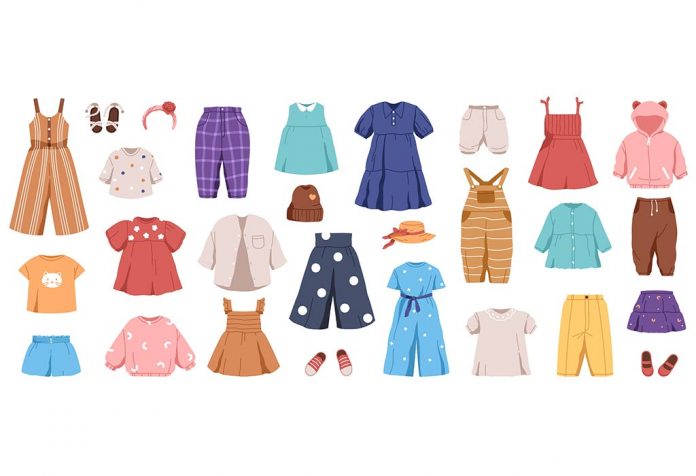
Kid's Clothing
Share
When it comes to dressing your little ones, it's important to consider both style and functionality. Here are some expert tips to help you choose the best clothing for your kids. Kids age classification can be broken down into two main categories: babies and children.
Babies (0-24 months)
- Newborn (0-3 months): Clothes for this age group are designed for comfort and ease of use. They're often loose-fitting and made from soft, breathable fabrics. Common styles include onesies, pajamas, and gowns.
- Infant (3-24 months): As babies grow, their clothing needs become more varied. They'll start to need outfits for different occasions, as well as clothes that allow them to move around more freely. Common styles include bodysuits, leggings, overalls, and dresses.
-
- Toddlers (2-4 years): Toddlers are starting to become more independent, and their clothing should reflect that. Clothes for toddlers should be easy for them to put on and take off themselves, and they should be durable enough to withstand the wear and tear of active play. Common styles include shirts, pants, dresses, and shorts.
- Preschoolers (4-6 years): Preschoolers are developing their own sense of style, and they may start to have preferences for certain colors, patterns, and characters. Clothes for preschoolers should still be comfortable and functional, but they can also be more stylish. Common styles include dresses, skirts, shirts, pants, and shorts.
- School-age children (6-14 years): School-age children need clothes that are both comfortable and stylish. They'll need clothes for school, as well as clothes for play and other activities. Common styles include jeans, t-shirts, dresses, skirts, and shorts.
1. Opt for Comfortable Fabrics
Children have sensitive skin, so it's crucial to choose clothing made from soft, breathable fabrics like cotton. Avoid fabrics that may cause irritation or discomfort.
2. Consider the Season
Make sure to dress your kids appropriately for the weather. In colder months, opt for warm layers and cozy sweaters. In warmer months, choose lightweight, breathable fabrics.
3. Prioritize Durability
Kids can be rough on their clothes, so it's essential to choose durable pieces that can withstand playtime and frequent washing. Look for reinforced seams and high-quality stitching.
4. Pay Attention to Sizing
Children grow quickly, so it's important to regularly check their clothing sizes. Avoid buying clothes that are too tight or too loose, as they can be uncomfortable for your child.
5. Choose Easy-to-Clean Options
Let's face it, kids can be messy. Opt for clothing that is easy to clean and care for. Machine-washable and stain-resistant fabrics are a parent's best friend.
6. Add a Pop of Color
Kids love bright colors and fun patterns. Incorporate vibrant hues and playful designs into their wardrobe to add a touch of personality to their outfits.
7. Invest in Versatile Pieces
Choose clothing that can be mixed and matched to create different looks. Versatile pieces like basic tees, leggings, and denim are great staples for any kid's wardrobe.
By following these expert tips, you can ensure that your child's clothing is not only stylish but also comfortable and practical. Remember, dressing your kids should be fun and functional!
